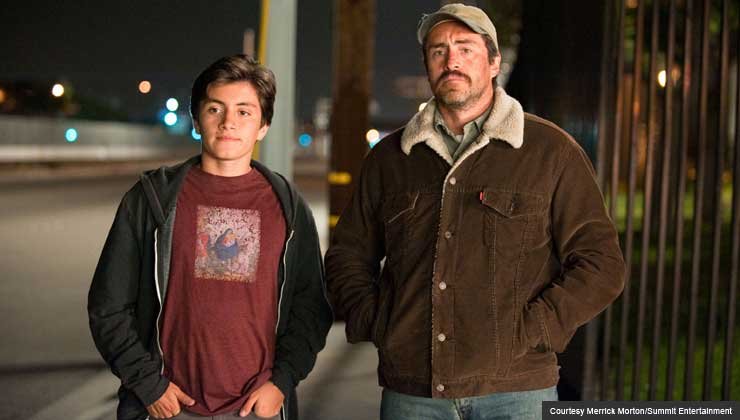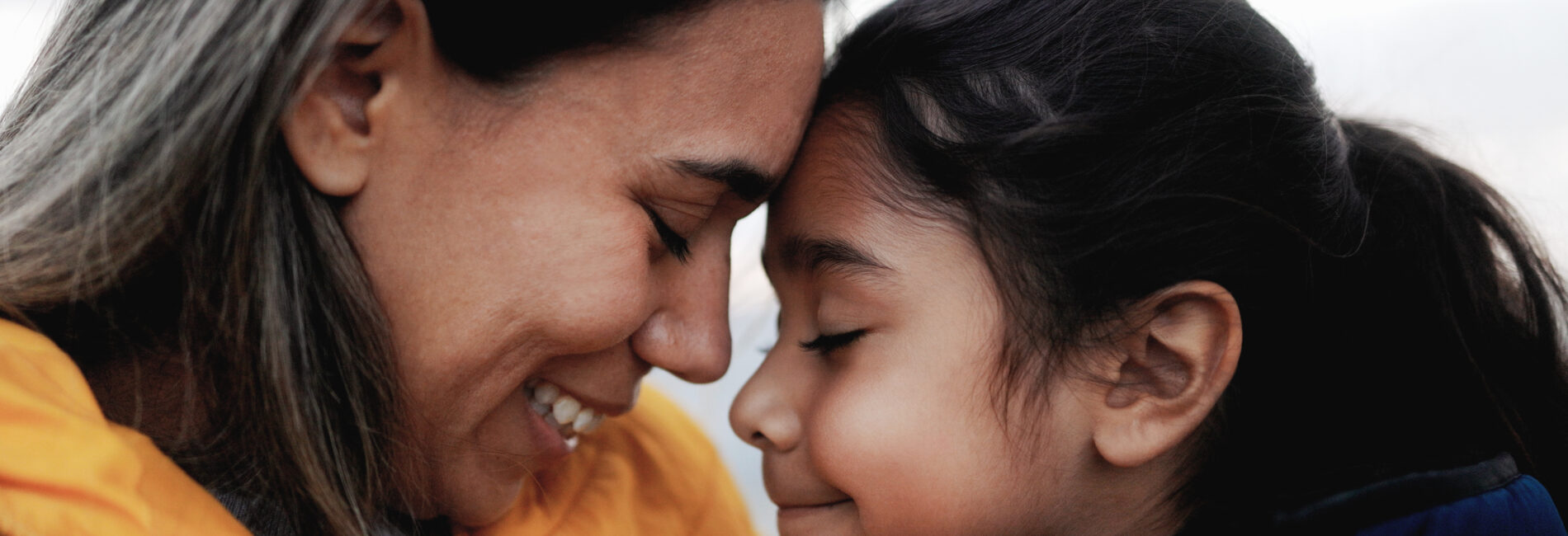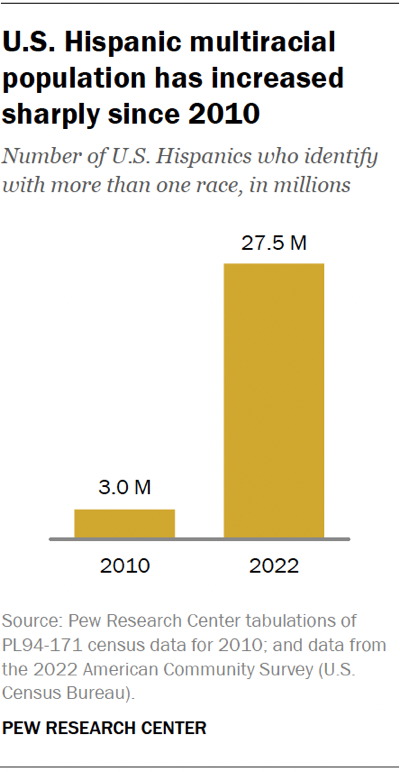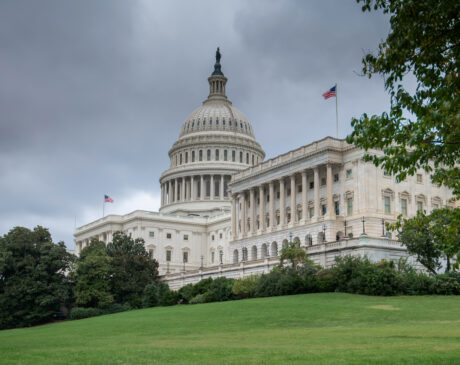The power of film can transform the world we live in …
Today marks a resolution in the 146-day strike for the Writers Guild of America. The Guild has 160,000 members that have been out of work and on the picket lines since May. That has meant a lot for a whole lot of people, and this near end to a very costly strike is exciting. During this time, I have discovered some truly incredible films. The breadth of topics range from Latinx Film, LGBTQ Issues and Identities, and Womxn Internationally. Through these collegiate courses, I was tasked with watching truly profound films (both documentary and fiction), and I wanted to share them with you.
Peace cannot exist without justice, justice cannot exist without fairness, fairness cannot exist without development, development cannot exist without democracy, democracy cannot exist without respect for the identity and worth of cultures and peoples.
Rigoberta Menchú Tum
DATA | PEW Research
The first thing is hard data: According to the most recent data from PEW Research, Hispanics are the largest racial or ethnic group in California and Texas. This demographic milestone in California happened in 2014 and was a first for the state with the nation’s largest Hispanic population. Latinos accounted for 40% of California’s population in 2022, among the greatest shares in the country.
That year, there were about 15.7 million Hispanics in California, up from 14.0 million in 2010. The non-Hispanic White population, the next largest group, declined from 15.0 million to 13.2 million during this time, reflecting a broader national trend.
Newborns, not immigrants, have driven the recent growth among U.S. Hispanics. During the 2010s, an average of 1 million Hispanic babies were born each year, slightly more than during the 2000s. At the same time, about 350,000 Hispanic immigrants arrived annually, down substantially from the previous two decades.
Representation Matters
1. Film | The Bronze Screen
The early days of Hollywood
The Bronze Screen explores the (often) untold story of Latinas/os in Hollywood, and the power in the messaging that infiltrates our subconscious. There are many modern-day interpretations of Latinx culture, but much like the proposed erasure of slavery, the film industry unwittingly polarized racial inequality through the roles assigned to Latinx talent such as that of the greasers or bad girls, housekeepers, or caretakers. From the erasure of historical knowledge of events such as the Bracero Program; to the sorely lacking representation on-screen; to the way characters are inherently written in a way that is riddled with prejudice, cowering to harmful and degrading stereotypes, in 2023 Hollywood has a long way to go to reach racial parity. Latinx makes up nearly 25 percent of the United States population, yet when it comes to their representation on screen, they make up a sad three-to-five percent of roles on television and in film (ABC13 Houston, 2023).
In the Golden Age of film, the industry placed Latinx actors in roles that fed the stereotype, whether it be by making the Latinx men and women violent or immoral, or turning them into objects of desire (casting Latinx as Latin lovers). The juxtaposition of how people of color were cast versus the traditional white roles honed in on the ethnocentrism (in this case, that whites saw themselves as superior to other non-white groups) by relegating people of color into “them”, or “they” classifications, somehow dehumanizing them and reducing people of color to overgeneralized “type casting”. That extends into real life, far beyond the lens. While Hollywood has made immense strides in representation, it cannot ignore the hand it has played in glorifying stereotypes for profit (Case, Mercado, Hernandez, USC Annenberg Inclusion Initiative, 2022).
This sentiment is visible by a group of Latina actors known as, #LatinasActingUp, now picketing during this historic WGA and SAG/AFTRA strike. Spearheaded by actors Dianna Maria Riva, Lisa Vidal, Constance Marie, and Geena Torres, their war cry to the studios is lack of representation and an imbalanced pay scale, and they are not alone. The pay discrepancy is still ongoing with Hispanics and Latinx making the lowest pay range among racial demographics (Zippia, Entertainer Demographics and Statistics in the U.S.). This film takes viewers through history and the Latinx experience. Exploring issues of racism, sexism, and prejudice, the silent era of cinema gave stardom to many Latin American actors, but when silent films transitioned to talkies, the studios did not want audiences to hear the thick Hispanic accents, so they resorted to stereotyping.
When talkies took over the industry, advances in technology were being made and Hollywood had to rethink how to best represent the Latin American on screen. At one point, the industry placated stereotypes to such an extreme that much of Latin America boycotted American films that portrayed any of their cultures. While they fed stereotypes in a multitude of ways from Mexican men playing brutes to Mexican women being viewed as those who were spicy and had loose morals, the push back to integrate into more positive and productive roles took hold. The result is ongoing …

2. Film | Latino: The Changing Face of America
Recognizing the Latinx influence
In the documentary film, Latino: The Changing Face of America, the concepts of immigration reform, political dominance, and a growing, undeniably valuable demographic of Latinx are explored in present time. Gaining insight into the revolution happening in this country in terms of population changes that favor a rising Latinx population, the film tackles systemic breakdowns in immigration, the influence the Latinx community has on Presidential outcomes, and courageously acknowledges the power of Latinx youth and the future of America. Through various institutions, it is education that is the catalyst to a better life and future for all Latinx. With higher graduation rates, college attendance, and job expansion among the community, the 55 million Latinx that are presently here in America will be the future visionaries of this country. That population and that number will nearly double in the next 30 years (Jorge Ramos, TED Talk, 2017).
Latinx culture has been sorely underrepresented in the media, which is why news anchor and journalist, Jorge Ramos, is so pivotal to the future of Latinx. Ramos is one of the most influential news anchors and journalists for Latinos in America. He challenges those in power, and at the core of all he does is a drive to inform the community to address difficult (and often contentious) topics such as the border wall, the influence of Latinx voters, and the exploitation of Latinx people by politicians, agribusiness and corporations. Much like the Great Migration of Puerto Ricans, many Latin Americans have come to America for the promise of a better life, and the younger generations of Latinx youth are going to hold this nation responsible and make it fulfill that promise (Gutierrez, Immigration and the Demographic Transformation of the United States).
America has come a long way from segregation, but there are still very visible markers of inequality that seem most prominent when talking about access to resources like education, job security, and economic prosperity. While Latinx has historically, in America, been viewed as a slave class, that outdated social construction is not only inaccurate, but offensive. The presence of the Latinx community has contributed largely to economic growth despite the media claims that Latinx are “taking their jobs” and “polluting the country”.
In contrast to that, in Ottumwa, Iowa, the large influx in the Latinx population is what saved the town from financial ruin. It is one of the few cities in the Midwest that doesn’t require a social security number or green card to get a business loan or own property, because the city understands that prosperity comes from adaptability and opportunity. Years ago, the city recognized their need to grow and as a result, created opportunity. The city of Ottumwa is now culturally rich and diverse, but most importantly, it is recovering economically.
Los Angeles and New York City are two of the largest metropolitan cities with a prominent Latinx population. The regions were once the enclaves of xenophobia but have grown into prosperous (pre-COVID) areas because of the diverse populations and access to education and social services. While the right-leaning Conservatives tend to blame all instability and the degradation of “American ideals” on immigrants and People of Color, facts and figures prove otherwise. According to Reuters and Ramiro Cavazos (CEO of the Hispanic Chamber of Commerce), the Latinx community has produced more than $2.6 trillion in economic impact in the United States, and the 4.1 million of Hispanic businesses have generated more than $800 billion in revenue (Reuters, 2020). That number may be stagnant as the country finds its footing in a post-Trump/post-COVID era, while navigating the torrent of lingering civil unrest, and horrific culture wars, but economic growth is inevitable — and the Latinx community is an important contributor to that prosperous growth.
"You are not lucky to be here. The world needs your perspective. They are lucky to have you."
— Antonio Tijerino, President & CEO of the Hispanic Heritage Foundation

3. Film | MAID IN AMERICA
Domestic Latina Workers Sacrifice So Much
In 2002 in Los Angeles, there were 100,000 domestic workers. As of 2022, there are a reported 2.2 million domestic workers in the United States; many of which are mothers that have left their families behind in Mexico or Central America in search of a better life. Many women make the heartbreaking decision to migrate without their children in the hopes that they will make enough money to send home, and eventually bring their children to America. Some women are in the U.S. for years without ever seeing their children, as was the case for Judith in the film, “Maid In America.” In a postindustrial world, many women are not able to secure traditional employment in their home country so they become nannies, caretakers, house cleaners, commodified social reproduction workers. (Hondagnou-Sotelo, Families on the Frontier)
The reality is that decades ago, women would accompany their husbands on the trip to America, but now women and even children make the trek unaccompanied by their spouses or parents which is increasingly dangerous. Children longing to be reunited with their mothers, mothers longing to be reunited with their children, the familial bond never disappears, but it does put a significant strain on everyone involved. It can take up fifteen years before some children are reunited with their mothers. In their countries of origin, many simply cannot survive on the income they receive so they search for more options (Maid In America documentary 2002). In 1948 when the Bracero Program was launched between Mexico and the U.S., migrant workers were recruited in what would be a catastrophic lie that promised Latinx men the promise of economic prosperity, housing, food, clothing, and safety. While the Program was shut down in 1964, the practices which were often inhumane, lacking human decency in how braceros were treated has persisted on through the decades. Today, that version of braceros comes by way of house cleaners, caretakers, janitorial workers, farm workers, and those just trying to make a livable wage.
Gendered labor may seem like a thing of the past, but social constructions of the roles people are “to play” is unfortunately still brimming in the modern world. Immigrant women’s labor has become the pinnacle of domestic work, with many clinging to the hope of bringing their families to the States. The women that come here to do domestic work create what is referred to as transnational families, meaning they have families in multiple countries – their children and siblings, parents, grandparents – that they support. It’s a grueling process for some, with many experiencing abuses from their private employers and being paid a modest amount for the hard work they do. That said, for these women, they are paid double what they would make in their respective nations so the decision must be made to work in America in order to create a more economically viable path forward. The phrase, “they’re taking our jobs” is therefore entirely inaccurate. These women in domestic work are in business for themselves, working for families, doing what they must to survive and ensure their children and families back home survive as well. They don’t leave children behind in vain. They do it with the sole intention of bringing them to America where their children can access better education and have a shot at making it in life. Bear in mind that “making it” isn’t the American Dream version. It’s the survivalist version … and these women and families are indeed survivors.
The Latinx and Hispanic populations fuel growth and economic wealth for many. Hispanics have played a major role in U.S. population growth over the past decade. The U.S. population grew by 24.5 million from 2010 to 2022, and Hispanics accounted for 53% of this increase – a greater share than any other racial or ethnic group. The next closest group is non-Hispanic people who identify with two or more races. Their population grew by 8.4 million during this time, accounting for 34% of the overall increase.
The number of Latinos who say they are multiracial has increased dramatically. More than 27 million Latinos identified with more than one race in 2022, up from 3 million in 2010. The increase could be due to several factors, including changes to the census form that make it easier for people to select multiple races and growing racial diversity.
The roughly 37.4 million people of Mexican origin in the U.S. represented nearly 60% of the nation’s Hispanic population in 2022. Those of Puerto Rican origin are the next largest group, at 5.9 million, which does not include another roughly 3.2 million Puerto Ricans who lived on the island in 2022. The U.S. population of Puerto Rican origin has grown partly due to people moving from Puerto Rico to the 50 states and the District of Columbia

4. Film | A Better Life
This country is a land of dreams. It can be a hard place, a cruel place.
Immigration in America is always framed as the biggest issue facing Americans, but rarely do they tell the story of the immigrants and why they come here. The film, A Better Life, explores the very real world of immigrants that braved some of the harshest conditions to come to this country in search of offering their children more opportunity. Directed by Chris Weitz, the father/son relationship in this film starring the incomparable Demián Bichir and José Julián, is one of the more honest looks at the lives of immigrants and day labourers, and the life of a single father trying to provide for his son. Bichir plays Carlos, who is working as a gardener with a man who offers to sell him his truck at a really good price so that Carlos can work for himself. The prospect of independence and making a better life for he and his son, Luis, is enough to inspire him to dare to dream. Luis is in high school, and his friends are all in gangs which seems like the only viable option of survival in parts of Los Angeles. Carlos tells his sister about the truck, and she gives him a loan, but we learn that the money she has, she’s been saving since the birth of her daughter, “for emergencies”. That burden becomes unbearable as the story goes on. Carlos purchases the truck, picks up a worker named Santiago that showed him a kindness and he wanted to return the favor. While on a job, Carlos climbs a palm tree to trim it, and while he is attached to the palm tree, Santiago steals the truck and all of the equipment. This is the beginning of a very long and arduous journey for Carlos and Luis. (Spoiler Alert ahead …)
In a harrowing tale of hardship and sacrifice, this film embodies the theme of survival entrepreneurialism (Valenzuela, Jr. 2000, UCLA). With little opportunity to work for a larger corporation, many immigrants become self-employed as a way to earn a living and stay off of the radar. That’s what Carlos was doing; keeping his head down, going to work every day, not stirring up any trouble or unnecessary attention. After Santiago steals his truck, Carlos’ spirit is broken and his drive to get the truck back becomes his primary motivator. Luis contemplates getting jumped into a gang, he gets suspended for getting into a fight, and Carlos asks him to come with him to find Santiago and get their truck and equipment back. While they wait, they walk to a traditional Mexican equestrian show. Luis mocks the cowboys and dramatic costumes, and Carlos uses this as a teachable moment to integrate more of his heritage into his son’s life. While there, they have a very deep discussion. Luis asks about the poverty of so many immigrant families and why they even had kids when they could barely survive themselves. He turns to his father and asks why he had him. This is an incredibly beautiful moment and becomes the turning point for the film. Like many immigrants here from Mexico and other Latin American countries, Carlos strives to give his son a better life than he has had.
The film takes the viewer on an emotional and exhausting journey as a father tries to make things better for his son. Together, Carlos and Luis steal back their truck and everything in it, escaping unscathed. That is, until they are pulled over by a nearby police officer that asks for vehicle registration and a driver’s license. Carlos is undocumented. Luis watches as his father is arrested and detained by ICE, scheduled for deportation back to Mexico.
The obstacles immigrants endure to make something of their lives, give their children a brighter future, they are vast. This film encapsulates the injustices that occur minute-by-minute in America (Quijano, Workplace Discrimination and Undocumented First-Generation Latinx Immigrants, 2020). The separation of children from their parents, the cost, the emotional and psychological toll it takes on every individual is daunting. With the cards stacked against him, Carlos is sent back to Mexico. Luis comes to see him at the detention center before he is sent back. In a touching conversation, you see the way the system has nearly broken Carlos. Luis must go live with his aunt now and wait for his father to return. Four months later, Carlos hires a coyote to make the long journey back to his son and sister, crossing the border once again.
The film is aptly named. Immigrants, especially those of Latin America descent, face so much austerity and constant derailments and yet their spirit fights on. The belief in freedom and the pursuit of happiness America promises all who come here should be instrumental in giving opportunity to those who seek it. Instead families are separated, harmed, treated like cattle, and often relegated to enclaves in Los Angeles that are poverty stricken and fraught with the violence that can accompany it. A Better Life is the tale of many that have come to this country in search of … un mejor vida.
5. Film | Women’s Liberation Movement
Feminism isn’t a bad word
Diving head first into feminism and activism, I read, “The Great Bluff That Led To A ‘Magical’ Pill and A Sexual Revolution” and I watched, the documentary by the BBC on the Women’s Liberation Movement. Our professor asked us to create an activism poster so I put together one that was a mixture of all of the systemic issues that deeply affect women. In the second wave of feminism that began to brew in the 1950’s, feminism wasn’t a coined term but rather an underlying societal issue that wasn’t being addressed. Women were expected to live a certain way, marry a certain way, breed a certain way, and the results led to a visible oppression elicited by men onto women. I chose to apply both the reading and the documentary to my poster to show a timeline of women’s movements, signify the abhorrence of the overturning of Roe v. Wade under the Trump Administration, and the continual culture war on LGBTQ females and female identifying individuals. In the 2014 NPR reading/interview, we learn about something many women have never learned: the development of the birth control pill. I found this to be instrumental in awakening my own ignorance of how it all came to be, and found myself devoted to Margaret Sanger, Gregory Pincus, John Rock, and Katherine McCormick who founded the pill. Known as the four crusaders for their insistence on finding a way for women to enjoy sex without the fear of pregnancy, this article is not only informative but critical to what we owe the women who trailblazed on our behalf.
Sanger founded Planned Parenthood, Rock developed invitro fertilization, McCormick was among the first women to graduate with a degree in science from MIT, and Pincus was a world-renown mammalian reproduction specialist. Together they spent an enormous amount of private funding and time to bring us closer to women’s autonomy. “These four were like guerilla warriors”, (Eig, NPR, 2014). This is represented in the questioning of faith, the American dream, the literal waves of feminism drawing, and the demand that women have the right to choose.
In the documentary on feminism and the Women’s Liberation Movement, the topics covered were more vast. The film explores the tenets of feminism, the backlash of trying to change the dominating male patriarchal foundation all things were founded on, and the continued plight women have ahead of them to assert true equality. Perhaps the most lingering quote from this film happens in the opening, “Feminism is my religion. I wouldn’t know how to think without it.” (Marilyn French, BBC, Women’s Libbers) This quote sets the tone for what will be a movement that is still presently in motion, though it’s taken on many different forms since the 1970’s. One pivotal women in the movement towards female equality comes from author, Robin Morgan who wrote a book about rape leading her to be ostracized by men. Her words left an indelible mark. She states, “Rape is nothing more or less than a conscious process of intimidation in which all men keep all women in a state of fear.” (Robin Morgan, BBC, Women’s Libbers) Marilyn French adds, “Men are predatory on women; They start to be prey on girls 8, 9, 10 years old … we know we are prey and that’s a horrible knowledge to live with about your own species.”
We saw this in plain terms in 2016 when the #MeToo Movement gripped the world with women and girls, boys and men coming forward about sexual harassment, sexual violence, and sexual assault. I cannot fathom that we are in 2023 and still fighting the same misogynistic monsters women have been fighting since the beginning of time, but it’s disheartening (at best) to know women are still preyed upon at alarming rates. Equality is nowhere near where it should be. We women live in fear when a man invades our space, looks at us the wrong way, follows us at night. From the ongoing gender wage gap to the attack on LGBTQ+, the poster below represents the war cry of inequality and the massive (and gaping) gender, racial and socioeconomic inequalities that exist today.
Finding Dawn , Christine Welsh, provided by the National Film Board of Canada
Film | Finding Dawn
This week as we learned about the plight of Native indigenous women in Vancouver and the United States, the film, Finding Dawn, is a documentary that unravels the story of 60 missing women; 22 of which were found murdered on a farm (Finding Dawn, Welsh, 2006). Native Women are disproportionately impacted by violence, and as the film follows the lives of many Native Women, the amount of families that have been stripped of their land, their homes, their families is astounding.
Four generations lost their livelihood at the hands of federal government, and between the rate of murders and the rising count of missing Native girls and women, one has to ask how this has been allowed to continue for so long. In fact, 500 Native Women have gone missing over the last 20 years in Vancouver alone, with thousands unaccounted for in North America (Native Women’s WildernessLinks to an external site.). Native women endure gang rapes, kidnapping, physical and sexual assault, and the second leading cause of death for Native girls ages 1-4 years old is murder.
Human rights of Native girls and women have been in jeopardy for far too long. Below is an excerpt from Red Road, a U.S. based organization advocating on behalf of Native Women. It embodies the horrors indigenous women continue to face, including intersectionality (gender, origin, race).
“Human rights are inherent to being human, regardless of gender or race, and include the right to life, personal safety, freedom from torture, freedom of expression, and much more.”
“Recent women’s rights movements have emphasized the ugly realities women all over the world face every day. That reality is even more severe for many Indigenous women. Facing the highest rates of sexual violence and physical assault of any group in the United States and Canada, they deal with several layers of discrimination, hatred and violence — based on both gender and their native heritage. It’s difficult to know exactly how prevalent the problem is, because it’s so under-reported, but the known statistics are staggering.”
CITED SOURCES
Case, Mercado & Hernandez, USC Annenberg Initative, 2022, Hispanic and Latino Representation in Film; https://assets.uscannenberg.org/docs/aii-hispanic-latino-rep-2021-09-13.pdf
Entertainment Demographics and Statistics in the US; https://www.zippia.com/entertainer-jobs/demographics/
Hispanics and Latinos Actors Representation in TV and film, ABC News Houston; https://abc13.com/hispanics-latinos-actors-representation-in-tv-and-movies/12934732/#:~:text=Although%20Latinos%20make%20up%20about,by%20the%20Latino%20Donor%20Collaborative.
TED Talk with Jorge Ramos, Why journalists have an obligation to challenge power, July 2017; https://www.ted.com/talks/jorge_ramos_why_journalists_have_an_obligation_to_challenge_power?language=en
David G. Gutierrez, A Historic Overview of Latino Immigration and the Demographics of the United States;Foundational Population Movements: Mexico
Thomas Reuters, Latinx Heritage Month: Leveraging the community’s financial influence & improving access to justice, Natalie Runyon (Director / ESG content & Advisory Services / Thomson Reuters Institute), October 14, 2020.
https://www.thomsonreuters.com/en-us/posts/legal/latinx-heritage-panels-leveraging-influence/
Stash Examines the Top Financial Goals and Challenges of Latinx Americans, Stash.com, October 2020; https://www.stash.com/learn/stash-examines-the-top-financial-goals-and-challenges-of-latinx-americans/
Documentary film, “Maid in America” 2005, Anayansi Prado
Pierrette Hondagnes-Sotela, Families on the Frontier: From Braceros in the Field to Braceros in the Home, https://www.semanticscholar.org/paper/Families-on-the-Frontier%3A-From-Braceros-in-the-to-Hondagneu-sotelo/0d38ac292a7a5e2b63f463e2ec8db0b3fc8568d8
Harvest of Loneliness: The Bracero Program documentary, KPBS, https://www.kpbs.org/news/arts-culture/2011/08/24/harvest-loneliness-bracero-program
Abel Valenzuela, Jr., Day Labourers as Entrepreneurs, Journal of Ethnic and Migration Studies, April 2000; UCLA
David G. Gutierrez, A Historic Overview of Latino Immigration and the Demographics of the United States;Foundational Population Movements: Mexico
Quijano, Workplace Discrimination and Undocumented First-Generation Latinx Immigrants, 2020; University of Chicago, Crown Family School of Social Work, Policy, and Practice; https://crownschool.uchicago.edu/student-life/advocates-forum/workplace-discrimination-and-undocumented-first-generation-latinx
Eig, Jonathan, NPR (2015). The Great Bluff That Led To ‘A Magic Pill’ And A Sexual Revolution, https://www.npr.org/2015/10/02/445089125/the-great-bluff-that-led-to-a-magical-pill-and-a-sexual-revolution











